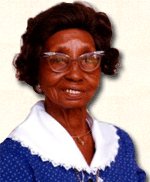Posted by Doyle Bailey for The Association for the Preservation of Historic Natchitoches (APHN)
Northwestern (State University, Natchitoches, La.) completed an economic impact study for the APHN (Association for the Preservation of Historic Natchitoches) Fall Tour of Homes. Here are the results: They may shock you!
Using the average ticket price of $37.66; approximately 536 tickets were purchased for the Tour of Homes.
“New Money” is defined as money introduced into the community that would not be available to the area (over 30 miles). $27,278 of new money was spent (ticket sale not included). In other words, each visitor who came to Natchitoches only for Tour of Homes spent $357.82. The total money (people coming just for Fall Tour and people who would be in Natchitoches anyway) was $27,820.
The impact multiplier for Natchitoches is 2.8 which makes the economic impact of Fall Tour of Homes approximately $509,037.73.
One problem with this study is that ticket sales are roughly estimated and the data is self-reported. But These numbers shocked me just as much as they have shocked you. Fall Tour has an enormous impact on the local economy with 57% spent on food and lodging; hotels, B&Bs, and restaurants benefit most from the event. What we discovered during this project is that primarily “new money” is generated. This is money that would not have been spent in Natchitoches without Fall Tour of Homes. We have a “tangible opportunity to increase the local economy,” and APHN is proud to have such an impact on the vitality of the community.
Adam Foreman
Executive Director APHN
APHN Newsletter
December 2012 e-Calico Courier Issue 13


